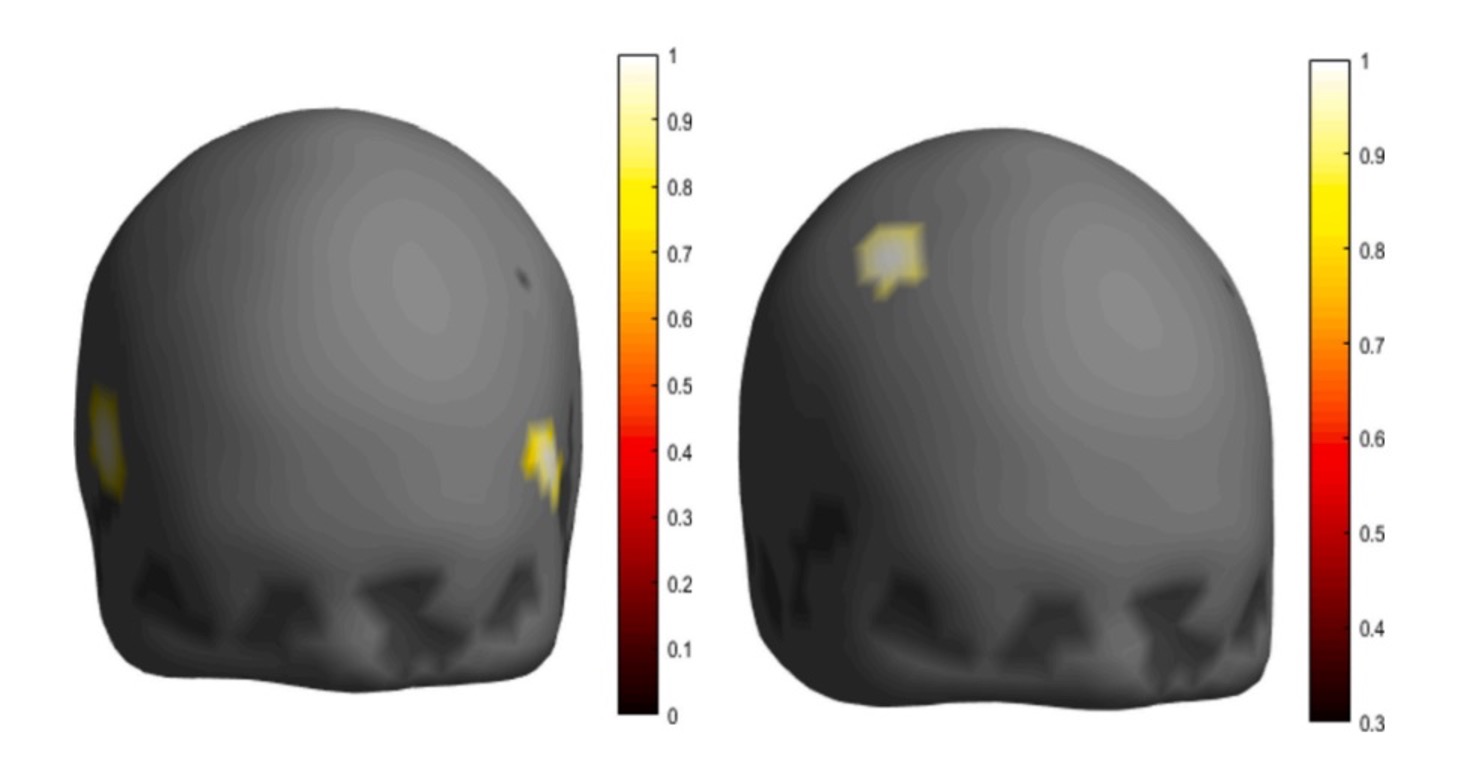HSE Researchers Discover Simple and Reliable Way to Understand How People Perceive Taste

A team of scientists from the HSE Centre for Cognition & Decision Making has studied how food flavours affect brain activity, facial muscles, and emotions. Using near-infrared spectroscopy (fNIRS), they demonstrated that pleasant food activates brain areas associated with positive emotions, while neutral food stimulates regions linked to negative emotions and avoidance. This approach offers a simpler way to predict the market success of products and study eating disorders. The study was published in the journal Food Quality and Preference.
How do we perceive taste? Why do some foods bring pleasure, while others evoke indifference or even aversion? Science has established that this is related to the activation of specific brain regions that process our perception of taste and emotions. For instance, sweet flavours can stimulate areas associated with pleasure, while bitter flavours activate regions responsible for alertness and defence against potential danger.
To investigate these processes, scientists traditionally use complex and expensive methods. Functional MRI (fMRI) is considered the most effective, as it allows researchers to ‘look inside’ the brain and observe which parts are activated by different tastes. However, such technologies require strict conditions: participants must remain motionless, which can interfere with the perception of food.
Researchers at HSE University successfully demonstrated how fNIRS can be used to study taste perception. This method is cheaper, easier to use, and allows participants to remain in a natural position, such as sitting at a table. However, fNIRS has rarely been applied to taste research, and its capabilities remain underexplored.
During the experiment, the scientists not only tested how effectively fNIRS captures brain responses to taste but also analysed how this activity is connected to other physiological processes. The researchers measured heart rate, skin response (electrodermal activity), and recorded facial muscle movements to obtain a comprehensive picture of how we react to the taste of food.
‘We tested the response to two types of food in 36 volunteers: pleasant (fruit puree) and neutral (vegetable puree). The choice of puree was deliberate: the soft texture helped avoid data distortion that could have arisen from chewing. As expected, the vegetable puree did not evoke excitement, but it would be incorrect to call it unpleasant food. If we rank all food, it falls into either pleasant or neutral categories. Truly “unpleasant” food, in essence, does not exist,’ explained Julia Eremenko, Research Fellow at the HSE Institute for Cognitive Neuroscience and one of the study’s authors.
Using a special fNIRS setup, the researchers targeted the insular cortex, a brain region deep within the temporal lobe responsible for taste perception. While fMRI is typically required to study this area, the modified fNIRS method enabled brain activity to be analysed with simpler equipment.
The researchers achieved significant progress in studying how the brain responds to food. One of the key accomplishments was the use of a specialised setup for near-infrared spectroscopy (fNIRS), which allowed them to focus on the insular cortex. This brain region, located deep within the temporal lobe, is responsible for taste perception. Typically, studying this area requires magnetic resonance imaging (MRI), but the modified fNIRS method enabled brain activity analysis using less complex equipment.
The results showed that pleasant food activated the insular cortex in the left hemisphere of the brain, which is associated with positive emotions and feelings of pleasure. Neutral flavours, on the other hand, activated the right precentral gyrus. This phenomenon is explained by interhemispheric asymmetry—a characteristic of brain function where each hemisphere processes different types of stimuli. The left hemisphere predominantly responds to positive emotions, while the right is associated with processing negative stimuli and avoidance reactions. Thus, the vegetable puree elicited unpleasant emotions in participants.

The researchers also recorded how food perception was reflected in the participants' facial expressions. Pleasant food activated the zygomaticus major muscle, responsible for smiling. In contrast, neutral food caused activation of the corrugator muscle, which furrows the brow before swallowing.
These physiological reactions are so reliable that they can be used to objectively assess taste preferences. Unlike verbal feedback, which can be subjective or insincere, facial reactions provide an honest indication of whether someone enjoys the food. Moreover, the method is simple and efficient: testing just 40–50 people is sufficient to draw conclusions. Such data can be valuable for food companies looking to improve their products.
‘We are actively studying how neurophysiological stimuli influence food perception. For instance, at our institute, we have developed a food delivery system integrated with neurophysiological equipment. This system is synchronised with experimental designs, allowing us to analyse the impact of packaging or price on taste perception. Additionally, my colleagues and I run a Rutube channel on neuromarketing where we share insights on how brain science can be used to effectively promote products and services, as well as to gain a deeper understanding of consumer motives and behaviour,’ explained Julia Eremenko.
The research was conducted as part of the strategic project 'Human Brain Resilience: Neurocognitive Technologies for Adaptation, Learning, Development and Rehabilitation in a Changing Environment' (‘Priority 2030’).
See also:
HSE Psycholinguists Launch Digital Tool to Spot Dyslexia in Children
Specialists from HSE University's Centre for Language and Brain have introduced LexiMetr, a new digital tool for diagnosing dyslexia in primary school students. This is the first standardised application in Russia that enables fast and reliable assessment of children’s reading skills to identify dyslexia or the risk of developing it. The application is available on the RuStore platform and runs on Android tablets.
Physicists Propose New Mechanism to Enhance Superconductivity with 'Quantum Glue'
A team of researchers, including scientists from HSE MIEM, has demonstrated that defects in a material can enhance, rather than hinder, superconductivity. This occurs through interaction between defective and cleaner regions, which creates a 'quantum glue'—a uniform component that binds distinct superconducting regions into a single network. Calculations confirm that this mechanism could aid in developing superconductors that operate at higher temperatures. The study has been published in Communications Physics.
Neural Network Trained to Predict Crises in Russian Stock Market
Economists from HSE University have developed a neural network model that can predict the onset of a short-term stock market crisis with over 83% accuracy, one day in advance. The model performs well even on complex, imbalanced data and incorporates not only economic indicators but also investor sentiment. The paper by Tamara Teplova, Maksim Fayzulin, and Aleksei Kurkin from the Centre for Financial Research and Data Analytics at the HSE Faculty of Economic Sciences has been published in Socio-Economic Planning Sciences.
Larger Groups of Students Use AI More Effectively in Learning
Researchers at the Institute of Education and the Faculty of Economic Sciences at HSE University have studied what factors determine the success of student group projects when they are completed with the help of artificial intelligence (AI). Their findings suggest that, in addition to the knowledge level of the team members, the size of the group also plays a significant role—the larger it is, the more efficient the process becomes. The study was published in Innovations in Education and Teaching International.
New Models for Studying Diseases: From Petri Dishes to Organs-on-a-Chip
Biologists from HSE University, in collaboration with researchers from the Kulakov National Medical Research Centre for Obstetrics, Gynecology, and Perinatology, have used advanced microfluidic technologies to study preeclampsia—one of the most dangerous pregnancy complications, posing serious risks to the life and health of both mother and child. In a paper published in BioChip Journal, the researchers review modern cellular models—including advanced placenta-on-a-chip technologies—that offer deeper insights into the mechanisms of the disorder and support the development of effective treatments.
Using Two Cryptocurrencies Enhances Volatility Forecasting
Researchers from the HSE Faculty of Economic Sciences have found that Bitcoin price volatility can be effectively predicted using Ethereum, the second-most popular cryptocurrency. Incorporating Ethereum into a predictive model reduces the forecast error to 23%, outperforming neural networks and other complex algorithms. The article has been published in Applied Econometrics.
Administrative Staff Are Crucial to University Efficiency—But Only in Teaching-Oriented Institutions
An international team of researchers, including scholars from HSE University, has analysed how the number of non-academic staff affects a university’s performance. The study found that the outcome depends on the institution’s profile: in research universities, the share of administrative and support staff has no effect on efficiency, whereas in teaching-oriented universities, there is a positive correlation. The findings have been published in Applied Economics.
Physicists at HSE University Reveal How Vortices Behave in Two-Dimensional Turbulence
Researchers from the Landau Institute for Theoretical Physics of the Russian Academy of Sciences and the HSE University's Faculty of Physics have discovered how external forces affect the behaviour of turbulent flows. The scientists showed that even a small external torque can stabilise the system and extend the lifetime of large vortices. These findings may improve the accuracy of models of atmospheric and oceanic circulation. The paper has been published in Physics of Fluids.
Solvent Instead of Toxic Reagents: Chemists Develop Environmentally Friendly Method for Synthesising Aniline Derivatives
An international team of researchers, including chemists from HSE University and the A.N. Nesmeyanov Institute of Organoelement Compounds of the Russian Academy of Sciences (INEOS RAS), has developed a new method for synthesising aniline derivatives—compounds widely used in the production of medicines, dyes, and electronic materials. Instead of relying on toxic and expensive reagents, they proposed using tetrahydrofuran, which can be derived from renewable raw materials. The reaction was carried out in the presence of readily available cobalt salts and syngas. This approach reduces hazardous waste and simplifies the production process, making it more environmentally friendly. The study has been published in ChemSusChem.
How Colour Affects Pricing: Why Art Collectors Pay More for Blue
Economists from HSE University, St Petersburg State University, and the University of Florida have found which colours in abstract paintings increase their market value. An analysis of thousands of canvases sold at auctions revealed that buyers place a higher value on blue and favour bright, saturated palettes, while showing less appreciation for traditional colour schemes. The article has been published in Information Systems Frontiers.



